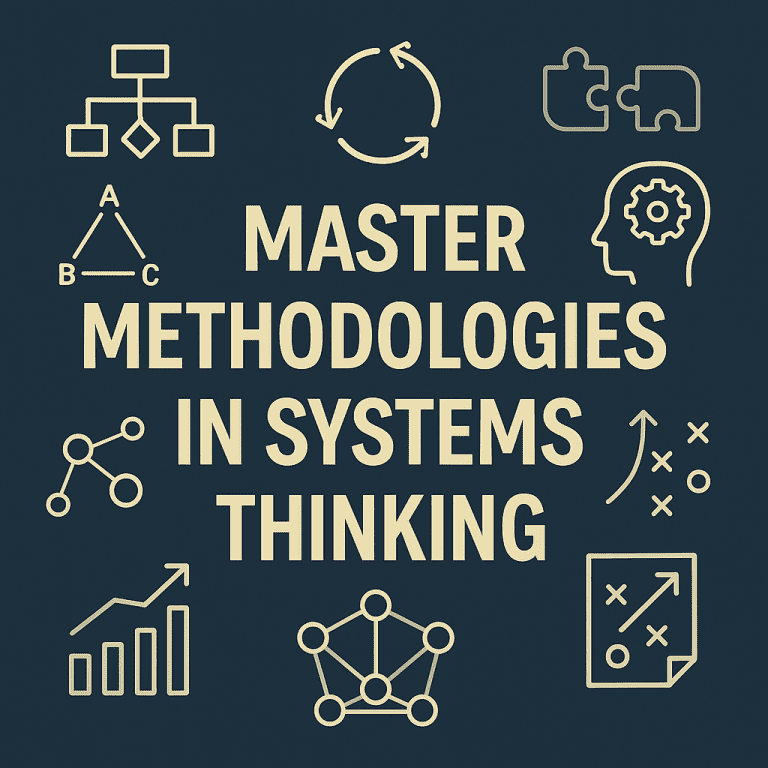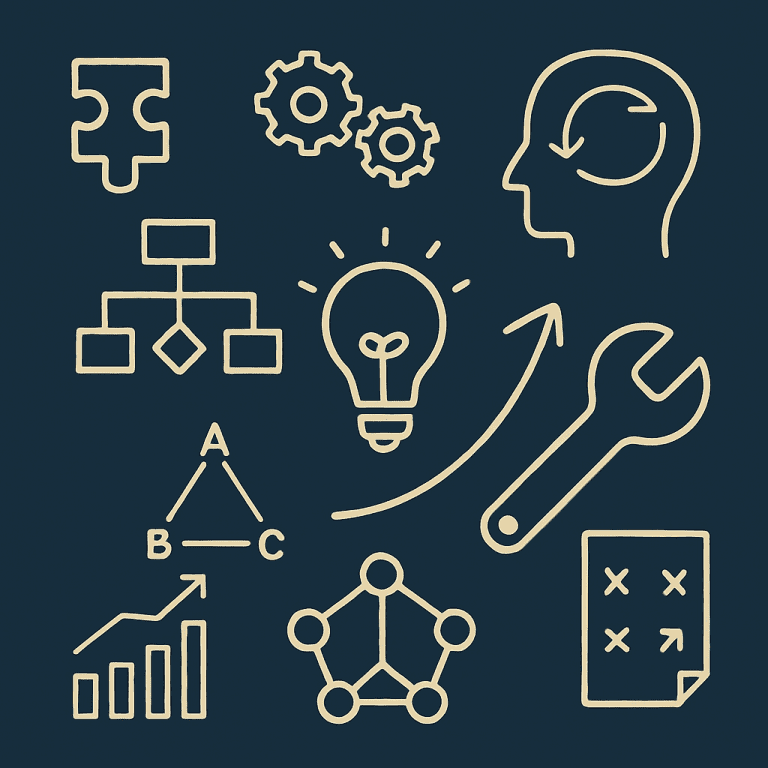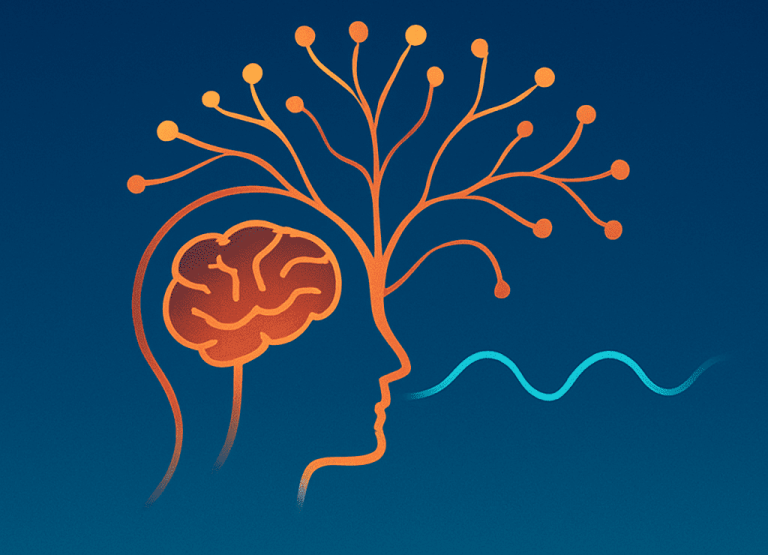Your Essential Deep Dive into the Foundations of Complexity
This FAQ debunks common myths and clarifies the 9+ core concepts that unlock systemic clarity—ideal for beginners and seasoned professionals alike.
Throughout this series, we’ve explored the transformative power of systems thinking—from reimagining organizations and technology to designing better governance, sustainability, and even personal growth paths. You’ve seen how it diagnoses deep-rooted challenges and inspires holistic, resilient solutions.
Now it’s time to go deeper—into the bedrock of systems thinking.
This post is your go-to FAQ for mastering the foundational concepts and confronting common misunderstandings that hold people back. Whether you’re a consultant, policymaker, designer, or curious thinker, this guide sharpens your system-aware mind.
🧩 Foundational Concepts Every Systems Thinker Should Know
1. What is Holism?
Definition: Holism is about seeing the whole before the parts. It rejects reductionism and recognizes that properties of the whole emerge from interactions—not from the parts alone.
Why it matters: Without holism, we risk solving symptoms instead of structures. Think of a car—it’s not just a collection of parts, but a transportation system that only functions when everything interacts seamlessly.
2. What are Interconnections & Interdependencies?
Definition: These are the visible and hidden relationships through which influence flows within a system.
Why it matters: A small disruption (like a delay at a supplier) can ripple across a global system, illustrating how tightly coupled components can amplify systemic risk.
3. What are Feedback Loops?
Definition: Cyclical chains where the output of a process loops back to affect its input.
- Reinforcing (Positive) Loops amplify change (e.g., viral content → engagement → more visibility).
- Balancing (Negative) Loops resist change to maintain stability (e.g., a thermostat adjusting temperature).
Why it matters: Feedback loops explain system behavior over time—why it grows, collapses, oscillates, or stabilizes.
4. What is Emergence?
Definition: System-level behaviors that arise from interactions, not from any single part.
Why it matters: Consciousness, market crashes, or bird flocking all emerge from simple interactions. Without studying these, we miss the true complexity.
5. What is Multi‑Dimensional Causality?
Definition: Systems thinking embraces webs of interacting causes and rejects simple A → B logic.
Why it matters: Complex outcomes often arise from numerous causes interacting over time. Think of unemployment being caused by education quality, automation, economic trends, etc.
6. What is Dynamic Behavior?
Definition: Systems evolve. Delays, feedback, accumulation, and tipping points mean today’s actions affect tomorrow’s outcomes.
Why it matters: Ignoring dynamics leads to failed strategies. Think of climate change—it builds slowly, then hits tipping points like ice cap collapse.
7. What are Mental Models?
Definition: Deep assumptions, beliefs, and narratives that unconsciously shape behavior and decisions.
Why it matters: Mental models define system rules. Changing them can shift everything. “Failure is bad” leads to risk aversion; “Failure is learning” fosters innovation.
8. What are System Boundaries?
Definition: Boundaries define what’s inside or outside a system. These are subjective, shaped by purpose and perspective.
Why it matters: A narrow boundary can exclude critical elements. Expanding it might reveal new insights or stakeholders you were ignoring.
9. What is Synthesis?
Definition: Synthesis means combining insights to form a holistic view. It’s the complement of analysis.
Why it matters: Without synthesis, we patch fixes. With it, we design solutions that honor the system’s complexity.
10. What are Leverage Points?
Definition: Places within a complex system where small shifts can produce big, lasting changes.
Why it matters: Identifying and acting on high-leverage points—like changing mental models or feedback loops—yields disproportionate impact.
🚫 Debunking Myths about Systems Thinking
| Myth | Reality Check |
|---|---|
| “It’s just brainstorming with diagrams.” | No—systems thinking is a rigorous methodology grounded in decades of theory and practice. |
| “Fixing one part is enough.” | Fixing parts without understanding interactions causes failure or sub-optimization. |
| “Data is everything.” | Not if it lacks context. Feedback, delay, and relationships matter more than raw numbers. |
| “Systems thinking tells you what to do.” | It helps you ask better questions and design more systemic interventions—it’s not prescriptive. |
| “It’s too abstract for real-world use.” | On the contrary, it’s used in city planning, public health, innovation, and crisis response. |
| “Correlation equals causation.” | Not in complex systems. Causality is multi-layered and circular, not linear. |
🔍 Mini-Practice: Test Your System Awareness
Choose a familiar system: your morning routine, a team meeting, or a coffee shop workflow.
Reflect on:
- Holism: What’s the full purpose of this system?
- Interconnections: Who/what influences what?
- Feedback Loops: Are there reinforcing or balancing cycles?
- Emergence: What patterns arise from interaction?
- Causality: What are the web of causes?
- Dynamics: Are there delays or thresholds?
- Mental Models: What assumptions are shaping behavior?
- Boundaries: What’s included/excluded?
- Synthesis: What does the whole reveal that parts don’t?
Takes 5–10 minutes. Try it weekly!
💡 Final Thought: Your Cognitive Compass
These principles are your new mental compass. They give you a way to cut through complexity, reveal root causes, and shape interventions that are coherent, resilient, and humane.
Systems thinking is not a trend. It’s a lifelong discipline and worldview.
📌 Practice it. Challenge it. Live it.
And watch as the world begins to make a deeper kind of sense.
- The Whisper of the Whole: A Systems Thinking Guide for Consultants
- What is a System, Really?
- The Living Dance of Systems
- Resilience and the Wisdom of Adaptive Systems
- Roots of Insight
- The Systems Thinker’s Compass
- Drawing Complexity
- Peering Below the Surface
- Master Methodologies in Systems Thinking
- Enhancing Familiar Tools with Systems Thinking
- Transforming Business Through Systems Thinking
- Systems Thinking in Public Policy & Governance
- Sustainable Systems
- Systems Thinking for Engineering & Technology
- The Inner System: You
- The Roadblocks
- The Future of Systems Thinking
- Systems Thinking FAQ: Myths, Misunderstandings & Core Insights







